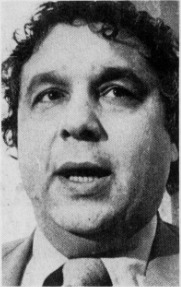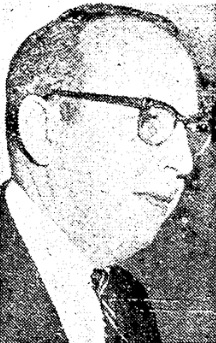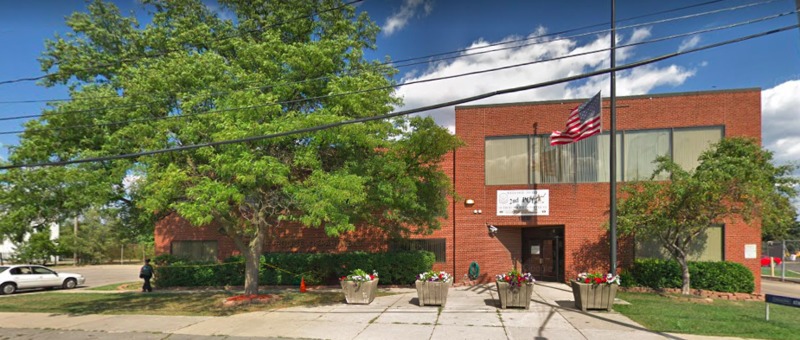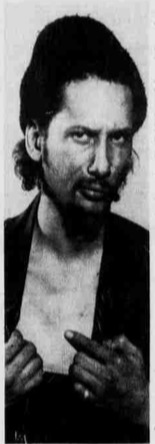Case Studies
Police violence and excessive force were far too prevelant in Detroit during the 1970s and early 80s. In the video below, Isaiah McKinnon, former Chief of Police and long time member of the Detroit Police Department talks about police violence and excessive force. McKinnon explains that a lack of accountability for police, often resulting from other officers turning a blind eye, was a big cause of excessive force in the DPD.
The lack of accountability for police officers that Former Chief of Police McKinnon discusses in this clip was created through a variety of factors. Many people in Detroit at the time, from citizens, to journalists, to prosecutors, seem to have been operating under the assumption that all police were fundamentally acting in the persuit of justice and that the use of excessive force was usually the result of misjudgements or mistakes as opposed to malicious intent. Additionally, as McKinnon described, the police themselves were very protective of other officers. McKinnon made refrence at other points during his interview to a "blue curtain" under which police were protected from accusations of misconduct by their fellow officers. The lack of accountability for police inspired a culture in which officers would have felt that they could act with relative impunity. That sense of being above the law often translated into acts of excessive force and extreme violence as exemplified by the two case studies described below.
Robert Carson and Maxine Thomas
On the night of April 12th, 1978, Robert Carson and his friend Maxine Thomas were enjoying what was probably a lovely, quiet evening at Carson’s apartment. Their enjoyment, was, however, suddenly interrupted by the loud bang of a firecracker coupled with the jarring sound of a racial epithet being yelled. Angered by the affront to the solemnity of his own residence, Carson grabbed his shotgun and quickly ran out the door to search for whoever had created the disturbance. There are two different accounts of what happened next. According to Carson, he failed to find anyone and returned his gun to his apartment before stepping out once more, this time going all the way outside his building and returning once more shortly after. In Carson’s account, as he came back into the building he was grabbed by three off-duty Detroit Police officers. The officers, Robert Dixon, Philip Torbitt, and Joseph Stefankiewiez, forced Carson into an empty apartment and began to beat him. In the officer’s version of events Carson still had his shotgun with him and the struggle took place in the hallway. In either case, what happened next is relatively undisputed. Carson was beaten severely by the officers. Officer Dixon, who lived in the same apartment building, split Carson's head open with a blow from the but of his police issue service revolver. Carson ended up needing thirteen stitches and a four day hospital stay to recover from the assault. His friend, Maxine Thomas, was also “roughed-up” although she sustained no serious injuries.
According to Carson, prior to the assault he had been experiencing ongoing harassment due to his refusal to leave his apartment building while it was undergoing renovations.Carson was even forced to take the matter to court, where a judge ruled in his favor, ensuring his legal right to remain on the premises. While it is impossible to know for sure what exactly occured on that spring night in 78’, the facts of the case suggest several distinct possibilities of how the events unfolded. First, there is the question of who threw the firecracker and yelled the racial epithet that caused Carson to leave his dwelling in the first place. One possibility is that it was unrelated to Carson as an individual, a random expression of the racist culture that was still far too prevalent in the 1970’s. A different interpretation of the event, however, might conclude that the racist attack may have been specifically targeting Carson. Through this interpretation one might infer that it was either the property manager or the off-duty police themselves who set off the firecracker that night. If either of those possibilities are the case, especially the latter, it would place Carson’s assault in a much more nefarious, potentially conspiratorial context. Following these interpretations to their conclusions, one must consider whether or not Carson was still armed with his shotgun when he was assaulted. If the off-duty police officers are assumed to be somewhat well intentioned, the conclusion could be reached that they had nothing to do with the firecracker, and were simply trying to eliminate the threat that they believed Carson posed by carrying his weapon. Although the beating would still be unesary and egregious, this view of the events would frame the assault as being closer to an accidental misreading of the situation. That being said, if one concludes that the officers themselves were behind the racist disturbance, the subsequent beating of Carson and Thomas would be reframed as an intentional conspiracy, possibly orchestrated as retaliation for his refusal to leave during renovations or as a message that Officer Dixon was angry about having to share an apartment building with black neighbors.
The circumstances of the assault of Robert Carson and Maxine Thomas were heinous, even compared to similar events during the same time period. The severity of the beating and the abhorrent racial attack that proceded it make the event stand out as exceptionally horrible. With that being said, the assault does reflect and highlight some of the patterns of police violence that were prominent during the late 1970’s and early 1980’s. Violence on the part of off-duty police officers was exceedingly common around the time of Carson’s assault. Detroit police at the time were required to carry their weapons with them at all times even when off duty. In addition, starting in the early 1970’s Coleman Young made an effort to start enforcing the cities requirement that all police were to live within city limits. It is likely that off-duty police violence may have increased as a result of this policy because it positioned armed off-duty police officers inside the majority black city they policed, often against their will. Whatever the case, brutality on the part of off-duty police officers was hallmark of police violence during the period.
The case of Robert Carson and Maxine Thomas also reflects another pattern: a lack of serious prosecution against police misconduct, and the wide held assumption that police were always acting to righteously enforce the law, even when they were off duty. The three officers involved in the assault were subsequently charged with assault and battery, a misdemeanor carrying a maximum sentence of 90 days imprisonment. Although the case was not the subject of much public attention, many within the police force itself reportedly felt that the charges were lighter than they could, or should, have been. Compounding those concerns was the fact that one of the three was apparently good friends with the Wayne county chief assistant prosecutor Dominick R. Carnovale. Carnovale denied any bias in the prosecution, stating that he had recused himself from involvement in the case. Nevertheless, the relation provoked scrutiny among other officials in the police department. Those officials noted that the officers were charged with a 90-day misdemeanor when they could have been charged with felonious assault instead, since Dixon used his pistol during the assault. Had Dixon and the other officers been charged with felonious assault they could have been facing up to six years in prison with a minimum of two years mandated by a state law against the use of a deadly weapon in a felony.
It was not entirely uncommon for police officers during the time period to receive lighter chargers or escape prosecution altogether. What was exceptional about this case, however, was that the chief prosecutor, William L. Cahalan went on record about his decision to prosecute under the lesser, misdemeanor charge. Cahalan explicitly acknowledged that in his view, the officer’s law enforcement positions gave them special protections from certain types of prosecution, telling a Detroit News reporter that he “...did not feel the statute [felonious assault] was aimed at police officers...You have to look at the intent of the Legislature” Calahan continued his justification by explaining: “They very well could have been performing their duty...It was a toss-up whether to charge them at all.” These statements from one of Detroit’s head prosecutors reveal the astounding amount of legal leeway given to police officers at the time. Not only did Cahalan suggest that a brutal beating like the one suffered by Carson could have been carried out in the pursuit of justice, he also made the provocative statement that, in his view, police officers were legal exempt from certain types of prosecution. The fact that Cahalan was willing to make those statements on the record suggests that his views may have been reflective of common practices in the prosecutor’s office as a whole. It is therefore quite likely that police officers in Detroit during the 1970’s were routinely avoiding serious legal charges through a widespread belief within the judicial system that certain laws simply did not apply to them regardless of the circumstances.
The assault of Robert Carson and Maxine Thomas and the failure to properly prosecute their attackers can thus be seen as evidence of persistent institutional problems in the Detroit Police Department and the entire criminal justice system in Detroit. High frequencies of violence committed by off-duty DPD officers, coupled with a systemic lack of prosecution, would have created an environment in which officers felt they could act with impunity, even when they were not on-duty.
Fred Warren and Gerald Stiff: The Cattle Prod Cases
Just after 1 a.m. on Sunday, February 3rd, 1980, a 39 year old Detroiter named Fred Warren was taken into police custody after allegedly trying to break into a house on the northwest side of the city. By 6:00am that same night, Warren was lying dead in a cell in the second precinct jailhouse. His death would become the biggest case of police brutality of the new decade, exposing patterns of abuse within the precinct that would shock the Detroit community.
A little less than a year earlier, in May of 1979, 31 year old Gerald Stiff punched a security guard in Detroit Memorial Hospital after the guard grabbed Stiff’s mother. As a result of the scuffle Stiff, still angry from the ordeal, was taken into the 2nd precinct where he was thrown into a cell. Frustrated with the situation Stiff began to yell obscenities at the guard outside of his cell. The guard proceeded to unlock the cell door, step inside, and hit Stiff with a blackjack. As Stiff hit the ground another officer stepped on the back of his neck while a third produced a long metal stick with two prongs at it’s tip. The stick was a cattle prod, and the officer jolted Stiff with it while he was being held on the ground. Unlike Fred Warren a year later, Stiff survived his encounter with the 2nd precinct and would eventually see justice in his case. It took Warren’s death, however, to bring that justice by revealing the inhumane practices being used to the public eye.
Warren’s treatment in the 2nd precinct lockup was remarkably similar to that of Stiff. Warren was locked securely inside his cell when he got into an argument with Officer John Pawlack. Pawlack had been a Detroit Police Officer for 13 years but had just transferred to the 2nd precinct jail to work as a doorman: one of the jail guards who controls access to the cells. Pawlack had only been on the job for two days when he wound up in a heated verbal exchange with Warren. The exact details of the argument were unclear but according to witnesses who were also locked in the jail at the time, Pawlack spit at Warren who responded by spitting back at Pawlack’s face. Enraged Pawlack grabbed a blackjack, unlocked the cell door, stepped inside, and swung it hard, hitting Warren in the side and rupturing his spleen. Warren fell to the ground writhing in pain and moaning that he needed help. Noone in the lockup, however, offered any medical assistance to Warren. Eventually Warren stopped moaning and became unresponsive. At that point, another 2nd precinct officer entered the cell once again and tried to revive Warren by shocking him with a cattle prod, likely the same one used against Stiff nearly a year prior. Warren could not be revived and by 6:50 he was declared dead. Although initially no charges were brought against Pawlack or anyone else, Homicide investigators looking into the case soon discovered both Pawlacks involvement as well as the fact that an electric cattle prod had been used in an attempt to wake Warren back up.
As word of the incident got to the press, many community members, as well as Mayor Coleman Young himself, called for a full investigation of the incident. Soon afterwards an internal investigation of practices in the 2nd precinct which uncovered further cases of abuse including that of Gerald Stiff. Shortly thereafter, Richard Walczak, the officer who had shocked Stiff was fired from the police force. Two commanding officers at the precinct who were present on the night Warren was killed were charged by the police review board and suspended pending their firing a year later. John Pawlack, who had tried to hide the evidence by throwing his blackjack down an alley, was later convicted of involuntary manslaughter and sentenced to 9 months in jail.
The full investigation of the issue revealed that the use of cattle prods to subdue or revive prisoners was fairly common in the 2nd precinct and that the practice had been going on since at least the beginning of 1979. The cattle prod cases were significant because they revealed to the public the inhumane treatment suffered by the prisoners at the hands of police officers. They also revealed the lack of effective supervision in the department and the cavalier attitudes held by some officers in regards to use of force.
Conclusions
Both of these case studies illustrate the factors that led to a lack of police accountability in the late 70s that helped create the conditions under which excessive use of violence by the DPD became relatively common. The cattle prod cases show the extent to which police during the period refrained from reporting the problematic behavior of their counterparts. Although many people within the 2nd Precinct lockup were aware of the use of cattle prods, it took the death of an inmate and an in-depth homicide investigation for the abuse to come to light. The unspoken rule of the “blue curtain” prevented police from reporting the misconduct of their fellow officers and helped to protect officers who had abused their power. The case of Robert Carson and Maxine Thomas reveals that the criminal justice system as a whole was prone to giving officers the benefit of the doubt. The statements from Chief Prosecutor Cahalan and their publication in the Detroit News demonstrate that it was not all that scandalous at the time for a senior prosecutor to claim that certain laws simply did ot apply to police officers. One can imagine that an officer reading those statements would be much less likely in the future to consider the potential legal consequences of using excessive force. From beat cop to prosecutor there was a systemic pattern within the criminal justice system in Detroit to conceal and minimize misconduct and violence committed by police officers.
Sources:
The Detroit News, NewsBank.
The Detroit Free Press, Proquest Historical Newspapers.
Interview of Isaiah "Ike" McKinnon by Matt Lassiter and HistoryLab Team, December 3, 2019, Ann Arbor, MI





